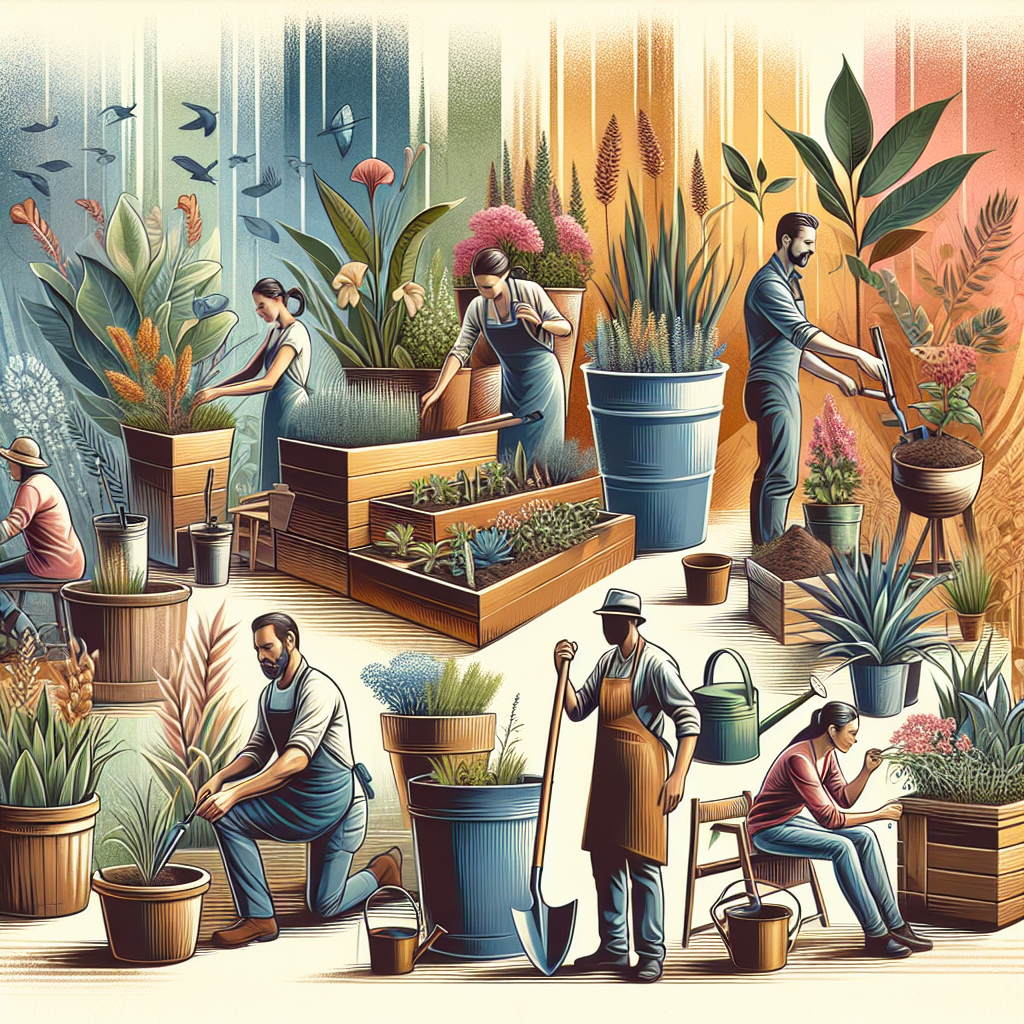
Imagine stepping outside onto your balcony or into your backyard and being greeted by a lush oasis of blooming flowers, vibrant herbs, and fresh vegetables, all grown in containers. This is the beauty of container gardening, a beginner-friendly way to cultivate your own little slice of nature, regardless of the space you have available. In this comprehensive guide, we will show you everything you need to know to get started with container gardening, from selecting the perfect containers and soil, to choosing the right plants and providing proper care. Get ready to grow your own green haven and reap the bountiful rewards!
Choosing Containers
Size and Depth
When choosing containers for your container garden, it’s important to consider the size and depth of the containers. The size of the container will determine how many plants you can fit in it, so you’ll want to choose a size that suits your gardening needs. Additionally, the depth of the container is important because it will determine how well the plants’ roots can grow. Plants with deeper root systems will require deeper containers to accommodate their growth.
Material
There are various materials to choose from when it comes to containers for your container garden. Common options include clay, plastic, and wood. Each material has its pros and cons. For example, clay pots are porous and allow for good air circulation, but they can be heavy and susceptible to cracking in freezing temperatures. Plastic containers are lightweight and durable, but may not provide as good ventilation as clay pots. Wood containers can provide a natural and aesthetically pleasing look, but they may deteriorate over time if not treated properly.
Drainage
Proper drainage is crucial for container gardening success. Without proper drainage, excess water can accumulate in the containers and lead to root rot or other plant diseases. When selecting containers, look for ones that have drainage holes in the bottom. If your chosen container doesn’t have any drainage holes, you can drill or punch holes in the bottom yourself. Additionally, using a layer of gravel or broken pottery at the bottom of the container can help improve drainage.
Aesthetics
Container gardening is not only a practical way to grow plants, but it can also be an opportunity to showcase your creativity and personal style. Consider the aesthetics of the containers you choose and how they will complement your overall garden design. You can opt for containers in different colors, shapes, and textures to add visual interest to your garden. Mixing and matching different containers can create a dynamic and visually appealing display. Don’t be afraid to let your personality shine through your container choices!
Selecting Plants
Suitable Plants
When choosing plants for your container garden, it’s important to consider their suitability for container growing. Some plants are better suited for containers than others. Look for plants that have compact growth habits and don’t require a lot of space. Herbs, salad greens, flowers, and even some fruit and vegetable varieties can thrive in containers. Consider the height and spread of the plants you choose, as well as their growth habits and compatibility with other plants you plan to grow in the same container.
Sunlight Requirements
Before selecting plants, it’s important to assess the amount of sunlight your container garden will receive. Different plants have different sunlight requirements, and it’s essential to choose plants that will thrive in the available light conditions. Some plants require full sun, which means they need at least six hours of direct sunlight per day. Others can tolerate partial shade or even full shade. Take note of the amount of sunlight your garden receives throughout the day and choose plants accordingly.
Watering Needs
Each plant has specific watering requirements, and it’s crucial to select plants with similar water needs when planning your container garden. Some plants prefer moist soil, while others are more drought-tolerant. Consider the climate in your area and the specific needs of the plants you want to grow. It’s also important to ensure that your containers have good drainage to prevent waterlogging and root rot. Additionally, grouping plants with similar watering needs together can make it easier to manage irrigation.
Space Considerations
Since container gardening is all about maximizing space, it’s essential to consider the space requirements of the plants you choose. Some plants, like vining vegetables or climbing flowers, may require trellises or stakes to support their growth. Others may spread out and require more horizontal space. Before selecting plants, consider the sizes they’ll reach at maturity and whether they’ll have enough room to grow in your containers. It’s also important to leave enough space between plants to ensure proper air circulation and prevent overcrowding.
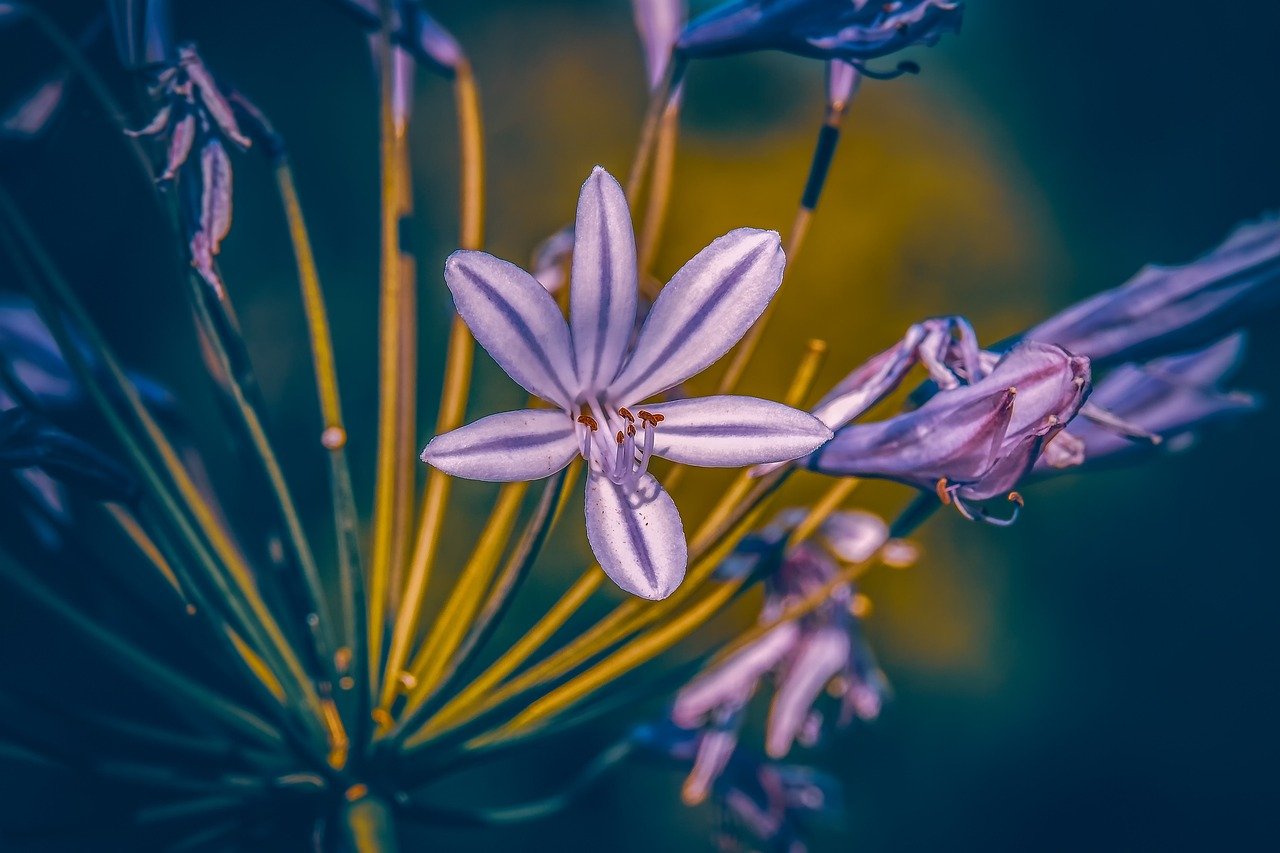
Preparing the Containers
Cleaning Containers
It’s important to start with clean containers for your container garden to prevent the spread of diseases or pests. Before planting, clean your containers with a solution of soap and water. Scrub the inside and outside of the containers, making sure to remove any dirt or residue. Rinse the containers thoroughly to remove any soap residue, as this can be harmful to plants. Allow the containers to air dry before proceeding with the planting process.
Adding Drainage Holes
If your containers don’t have drainage holes, it’s essential to add them to ensure proper drainage. Without drainage holes, excess water can accumulate in the containers and cause root rot or other plant diseases. To add drainage holes, use a drill or a hammer and a nail to create several small holes in the bottom of the containers. Make sure the holes are evenly spaced and sized appropriately to allow excess water to drain out effectively.
Choosing Soil Mix
Choosing the right soil mix is crucial for the success of your container garden. Regular garden soil is not suitable for container gardening, as it tends to become compacted and doesn’t provide adequate drainage. Instead, opt for a high-quality potting mix or a soilless mix specifically formulated for container gardening. These mixes are lightweight, well-draining, and rich in organic matter, providing an ideal environment for root growth and plant health.
Filling Containers
Once you’ve prepared your containers, it’s time to fill them with soil. Start by adding a layer of potting mix to the bottom of the container, ensuring it covers the drainage holes. Then, place your plants in the container, making sure they are positioned at the appropriate depth. Fill in the empty spaces around the plants with more potting mix, gently pressing it down to remove any air pockets. Continue filling the container until the soil reaches about an inch below the rim. Avoid overfilling the container, as it can make watering and maintenance difficult.
Planting Process
Garden Design
Before you start planting, take some time to plan and design your container garden. Consider the visual appeal and functionality of your garden, as well as the needs of the plants you’ve chosen. Think about color schemes, height variations, and textures to create an aesthetically pleasing and balanced garden design. You can experiment with different combinations of plants to achieve the desired effect. Don’t be afraid to get creative and let your personal style shine through!
Plant Placement
When planting in containers, it’s important to consider the needs of each individual plant and how it will coexist with other plants in the same container. Place taller plants towards the back or center of the container, and shorter plants towards the front or edges. This will create a sense of depth and ensure that all plants receive adequate sunlight. Additionally, consider the spread of each plant and provide enough space for them to grow without overcrowding each other.
Planting Techniques
When planting, gently remove the plants from their nursery pots and loosen the roots before placing them in the container. This will help the roots establish and spread more easily. Make a hole in the soil mix that is slightly larger than the root ball of the plant. Place the plant in the hole and gently press the soil around the roots to secure it in place. Be careful not to plant the seedlings too deep or too shallow, as this can affect their growth and overall health.
Mulching
Mulching is a beneficial practice in container gardening that helps conserve moisture, suppress weeds, and regulate soil temperature. After planting your container garden, apply a layer of organic mulch, such as shredded bark or compost, around the base of the plants. Make sure to leave a small gap between the mulch and the plant stems to prevent the risk of rot. Mulch should be applied to a depth of about 1-2 inches. Mulching not only provides practical benefits but also enhances the overall appearance of your container garden.
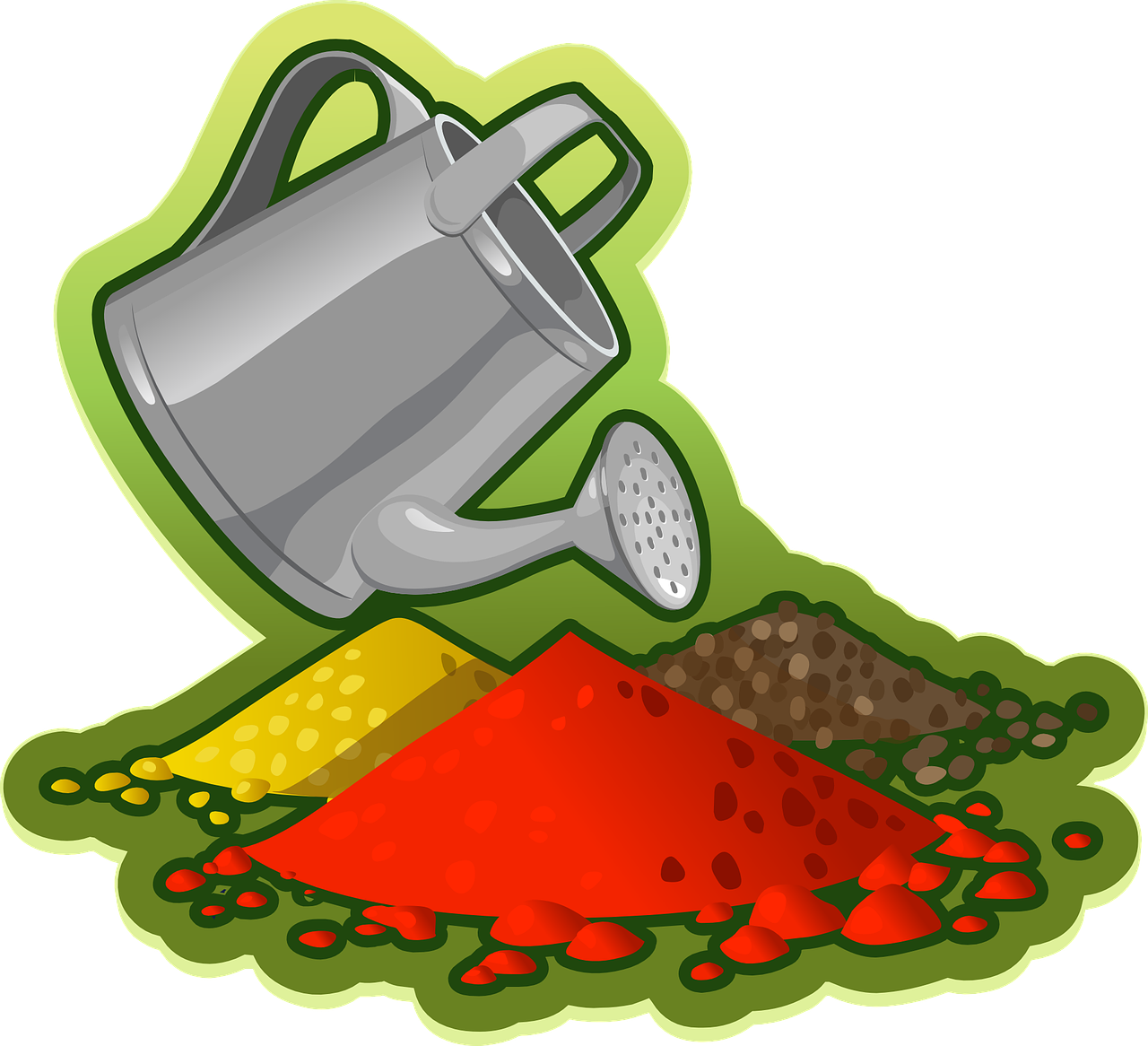
Watering and Fertilizing
Watering Frequency
Proper watering is essential for the health and vitality of your container garden. The frequency of watering will depend on various factors, including the specific plants you’re growing, the size of the containers, and the prevailing weather conditions. In general, containers tend to dry out more quickly than traditional garden beds, so they may require more frequent watering. However, it’s important not to overwater, as this can lead to root rot or other plant diseases. Monitor the moisture levels of the soil and adjust your watering routine accordingly.
Watering Techniques
When watering your container garden, aim to thoroughly moisten the soil without saturating it. Watering too lightly can cause the roots to dry out, while watering too heavily can drown the plants. Water the containers until water starts to flow out of the drainage holes, ensuring that the entire root ball is evenly moistened. Avoid wetting the leaves, as this can increase the risk of fungal diseases. Consider using a watering can, hose with a gentle spray nozzle, or a drip irrigation system to ensure even moisture distribution.
Fertilizer Selection
Container-grown plants often require regular fertilization because the limited soil volume may not provide an adequate nutrient supply. When selecting fertilizer, choose a balanced, slow-release fertilizer specifically formulated for container plants. These fertilizers release nutrients slowly over time, providing a consistent supply of essential elements for plant growth. Avoid using excessive amounts of fertilizer, as this can lead to nutrient burn or imbalances. Always follow the instructions on the fertilizer packaging for proper application rates.
Fertilizer Application
To fertilize your container garden, apply the fertilizer according to the instructions on the package. In general, it’s recommended to apply fertilizers every 4-6 weeks during the growing season. Scatter the fertilizer evenly over the soil surface, avoiding direct contact with the plant stems or leaves. Water the containers after applying the fertilizer to help dissolve and distribute the nutrients. It’s important to strike a balance with fertilization – providing enough nutrients to support plant growth without overloading the soil.
Pruning and Maintenance
Pruning Guide
Pruning is an essential maintenance task in container gardening. Regular pruning helps control plant size, shape, and encourages vigorous growth. Different plants have different pruning requirements, so it’s important to familiarize yourself with the specific pruning needs of the plants in your container garden. Pruning can involve removing dead or damaged foliage, shaping the plants, or removing spent flowers to promote further blooming. Use clean, sharp pruning shears or scissors to make clean cuts and reduce the risk of disease transmission.
Deadheading
Deadheading refers to the removal of spent flowers from plants. This practice not only improves the overall appearance of your container garden but also encourages plants to produce more blooms. When deadheading, remove the faded flowers by pinching or cutting the stem just above a healthy leaf or bud. This will redirect the plant’s energy towards new growth and flowering. Regular deadheading can extend the blooming period of many flowering plants, ensuring a vibrant and colorful container garden throughout the season.
Pest and Disease Control
Container gardening is not exempt from pest and disease-related challenges. Pests like aphids, snails, and caterpillars can attack your plants, while diseases like powdery mildew or root rot can cause damage. Regularly inspect your plants for signs of pest infestation or disease. If any issues are detected, take appropriate action promptly. This may involve applying organic pest control methods, such as introducing beneficial insects or using insecticidal soaps, or using appropriate fungicides for disease control. Maintaining a clean and well-maintained container garden can help prevent pest and disease problems.
Weeding
Weeds can compete with your container plants for water, nutrients, and sunlight, so it’s important to stay on top of weed control in your container garden. Regularly inspect your containers for any weed growth and remove weeds as soon as possible. Use a small hand trowel or your hands to carefully remove the weeds, ensuring that you remove the entire root system. Applying a layer of organic mulch can also help suppress weed growth and make it easier to keep your container garden weed-free.
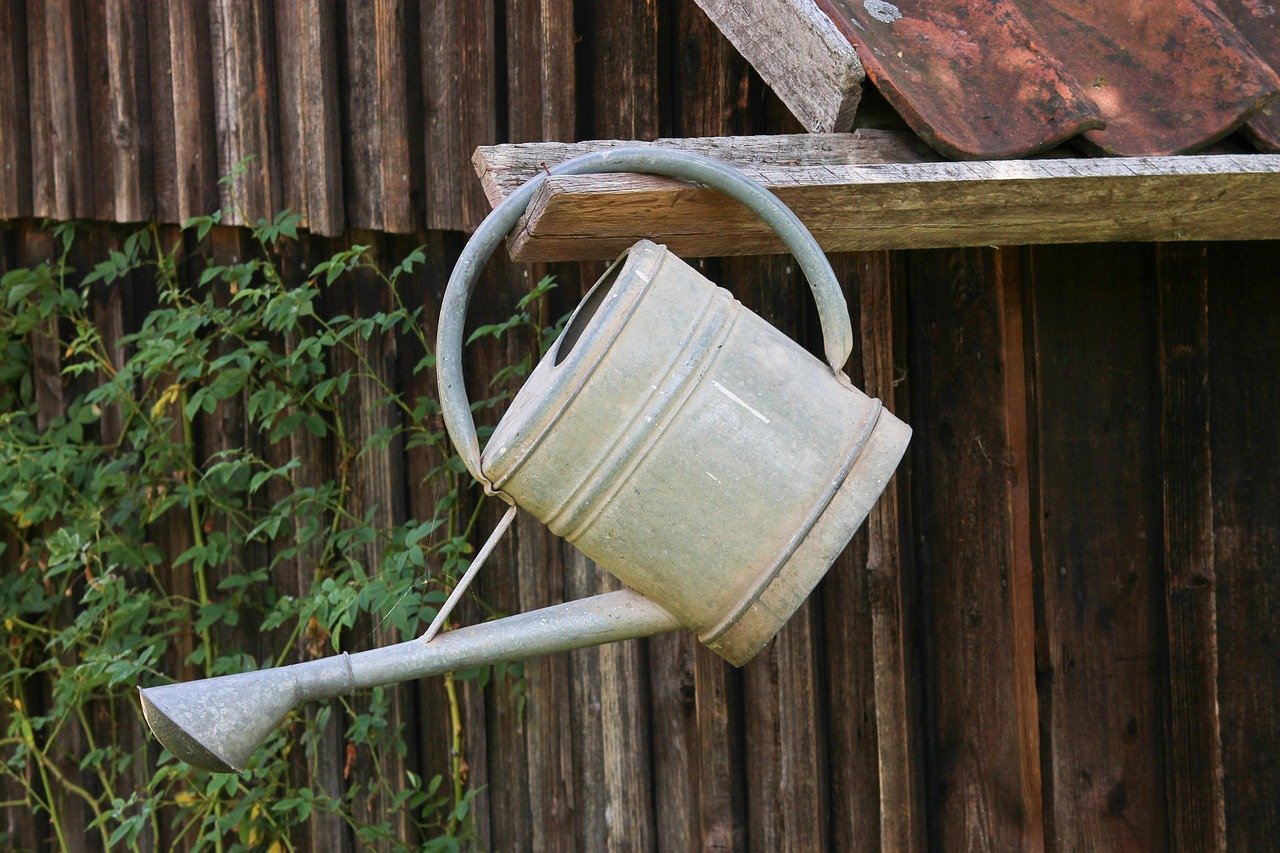
Harvesting and Usage
Harvesting Techniques
One of the joys of container gardening is being able to enjoy the fruits (and vegetables) of your labor. Harvesting your homegrown produce at the right time is essential for optimal flavor and quality. Different crops have different harvesting methods and timelines, so it’s important to familiarize yourself with the specifics of each plant. For example, leafy greens can be harvested by picking individual leaves, while fruits like tomatoes or peppers should be harvested when fully ripe. Use clean gardening shears or scissors to harvest your crops and handle them with care.
Storage Tips
Once you’ve harvested your homegrown produce, it’s important to store them properly to maintain their freshness and flavor. Some crops, like root vegetables or fruits, can be stored in a cool, dark place for an extended period. Others, like leafy greens or herbs, are best used fresh. Consider the specific storage requirements of each crop and store them accordingly. Remove any damaged or spoiled produce to prevent the spread of diseases. Storing your homegrown produce properly will allow you to enjoy your harvest for an extended period.
Using Homegrown Produce
The real joy of container gardening comes from being able to use your homegrown produce in various culinary creations. Whether it’s adding fresh herbs to your favorite recipes, tossing homegrown salad greens into vibrant salads, or incorporating homegrown vegetables into delicious stir-fries, the possibilities are endless. Experiment with different flavors and combinations, and let your creativity shine in the kitchen. Using homegrown produce not only ensures freshness, but it also provides a sense of satisfaction and connection to the food you have grown with your own hands.
Preserving
If you have a plentiful harvest and can’t consume all the produce at once, preserving is a great way to make the most of your homegrown bounty. There are various methods of preserving, including canning, freezing, drying, and pickling. Each crop may have specific preservation techniques that yield the best results. Take the time to research and learn the appropriate preservation methods for the crops you have grown. Proper preservation will allow you to enjoy your homegrown produce even during the offseason and make the most of your hard work.
Seasonal Considerations
Seasonal Planting
Container gardening allows for flexibility in planting throughout the year, taking advantage of different seasons and climates. Depending on your location and the specific requirements of the plants you’ve chosen, you can plant cool-season crops in the spring or fall and warm-season crops in the summer. Consider the average last frost date and the first frost date in your area when planning your seasonal plantings. With proper planning and care, you can enjoy a variety of fresh produce and beautiful flowers throughout the year, even in a limited space.
Winter Care
Winter brings its own set of challenges for container gardening. Frost, cold temperatures, and reduced sunlight can affect plant growth and survival. When preparing for winter, consider moving frost-sensitive plants indoors or providing them with protection, such as covering them with frost blankets or moving them to a sheltered location. Insulate containers with bubble wrap or burlap to provide some protection against freezing temperatures. Reduce watering and fertilization during the dormant season and ensure that your garden receives adequate sunlight to promote plant health.
Protecting from Heat
In warm climates or during heatwaves, container plants can get stressed due to excessive heat and sun exposure. To protect your plants from heat stress, consider moving containers to a shaded area during the hottest parts of the day. Grouping containers together can create shade and reduce evaporation. Use reflective mulch or light-colored containers to help reflect heat away from plants. Providing an adequate water supply during periods of high heat is essential, as plants may require more frequent watering in hot weather.
Dealing with Frost
Frost can pose a significant risk to container plants, especially those that are more susceptible to cold temperatures. When frost is expected, consider moving frost-sensitive plants indoors or to a protected area, such as a garage or a greenhouse. If moving them indoors is not possible, cover the plants with frost blankets or other breathable materials to provide some protection against freezing temperatures. Monitor the weather forecast regularly and take appropriate action to protect your plants when frost is imminent.
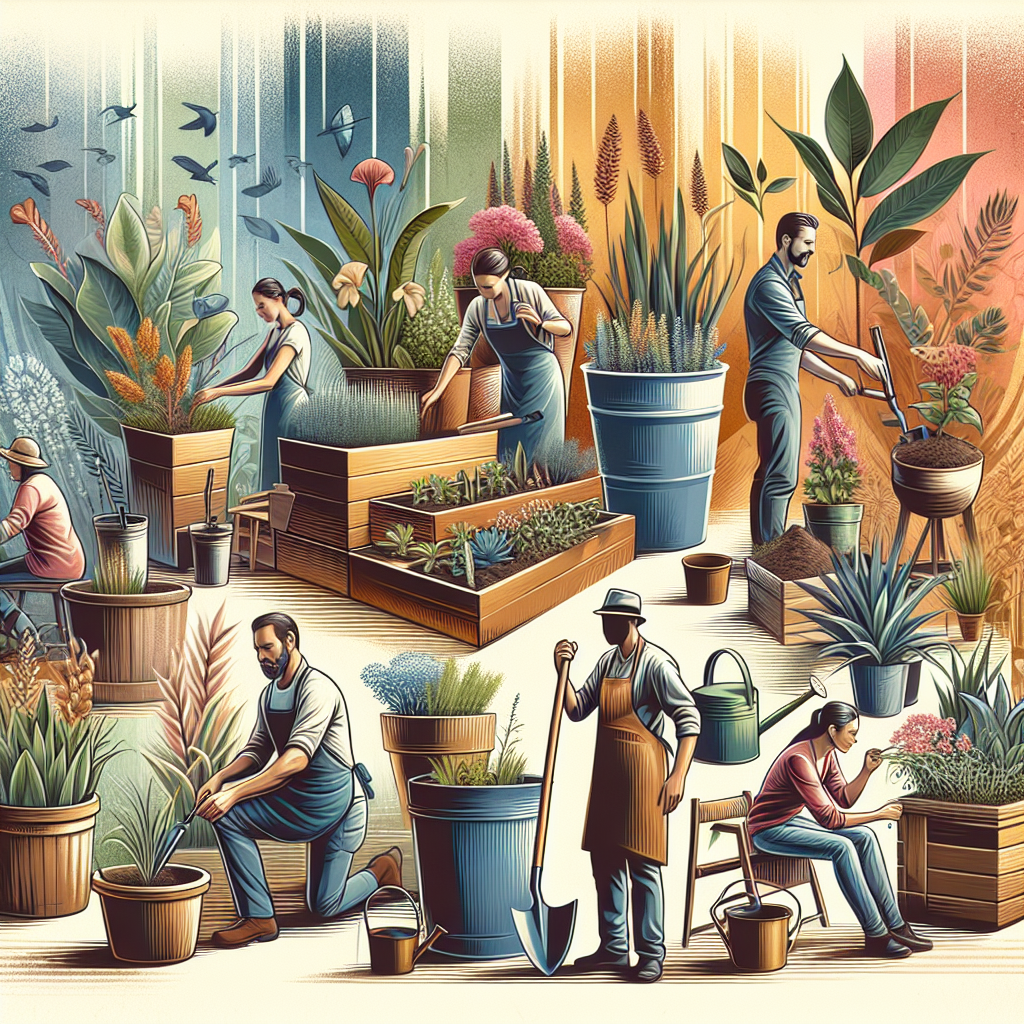
Troubleshooting Common Issues
Overwatering
Overwatering is a common issue in container gardening and can lead to root rot, fungal diseases, and poor plant growth. To prevent overwatering, ensure that your containers have proper drainage holes and that excess water can freely drain out. Monitor the moisture levels of the soil and avoid watering if it is already moist. Instead, wait until the top inch or so of the soil feels dry before watering again. Proper irrigation practices and well-draining soil mixes can help prevent overwatering.
Underwatering
Underwatering is another issue that can affect container plants’ health and growth. Inadequate water supply can cause wilting, stunted growth, and poor fruit set. Monitor the moisture levels of the soil and water your container plants regularly, ensuring that the soil is evenly moistened. However, be cautious not to overwater, as this can lead to waterlogged soil and root rot. Find the right balance and adjust your watering routine based on the specific needs of your plants and the prevailing weather conditions.
Nutrient Deficiencies
Container-grown plants may be susceptible to nutrient deficiencies due to the limited soil volume and the leaching of nutrients during watering. Monitor your plants regularly for signs of nutrient deficiencies, such as yellowing leaves or stunted growth. To address nutrient deficiencies, it’s recommended to use a balanced, slow-release fertilizer specifically formulated for container plants. Follow the fertilizer’s instructions for proper application rates and adjust your fertilization routine accordingly. Regularly inspect and fertilize your container garden to provide the essential nutrients plants need for healthy growth.
Pest Infestation
Pests can be a persistent nuisance in container gardening and can damage or even kill your plants if left unchecked. Regularly inspect your plants for signs of pest infestation, such as chewed leaves, sticky residue, or visible insects. If pests are detected, take appropriate action promptly to prevent further damage. Organic pest control methods, such as introducing beneficial insects or using insecticidal soaps, can help manage pest populations effectively. Additionally, practicing good garden hygiene, such as removing debris and weeds, can help reduce pest habitat and minimize infestation risks.
Creative Container Ideas
Vertical Gardening
Vertical gardening is an innovative way to maximize space in container gardening. By utilizing vertical structures like trellises, arbors, or hanging containers, you can grow climbing plants or vining vegetables in a limited area. This not only provides additional planting space but also creates visually stunning displays of lush greenery. Consider growing flowering vines, such as morning glories or clematis, or edible climbers like pole beans or cucumbers. Vertical gardening opens up a world of possibilities and allows you to create a unique and beautiful container garden.
Hanging Baskets
Hanging baskets are a classic and versatile container gardening option. They allow you to bring plants to eye level, adding dimension and visual interest to your garden. Hanging baskets are ideal for trailing plants or cascading flowers that can gracefully spill over the edges. Consider planting vibrant petunias, lush ferns, or fragrant herbs in hanging baskets. Hang them from sturdy hooks or brackets in strategic locations, such as porches, fences, or pergolas, to create a stunning focal point in your container garden.
Repurposed Containers
Get creative with your container choices by repurposing unconventional items into unique planters. Old buckets, crates, wine barrels, or even kitchen utensils can be transformed into quirky and eye-catching containers for your plants. Not only does repurposing save money and reduce waste, but it also adds a personal and creative touch to your container garden. Remember to prepare these repurposed containers appropriately by ensuring proper drainage and lining them if necessary. Let your imagination run wild and turn everyday items into extraordinary planters!
Group Plantings
Group plantings are a great way to create stunning displays in container gardening. By grouping plants with complementary colors, textures, or growth habits together in a single container or a series of containers, you can achieve a visually striking effect. Consider combining different annual flowers, herbs, or ornamental grasses in the same container to create a vibrant and dynamic arrangement. You can also experiment with different height variations and foliage shapes to add depth and interest to your group plantings. Group plantings offer endless opportunities for creativity and allow you to personalize your container garden.






